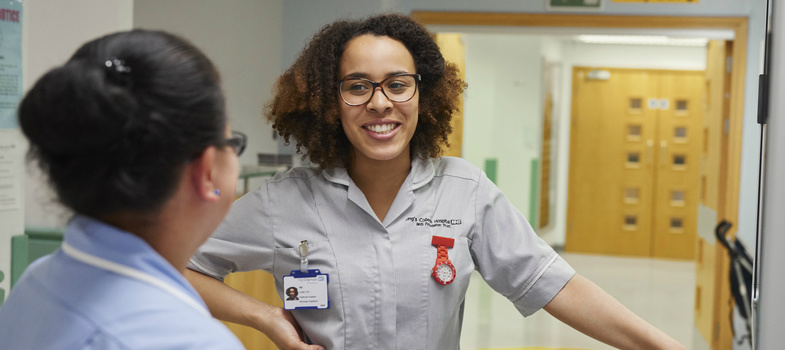2.4 Helping to manage tremor
Tremor is one of the main symptoms of Parkinson’s. However, not everyone will develop it – approximately 70% of people with Parkinson’s experience this symptom. A tremor is an uncontrollable shaking movement that affects a part of the body, often the hand. Tremor will usually begin on one side of the body and then progress to both sides as Parkinson’s progresses. The most typical tremor in Parkinson’s is called a ‘pill-rolling’ rest tremor, as it resembles the action of rolling a pill between the thumb and index finger.
A tremor may be more obvious when a person is resting or when they get worried or excited. Sometimes you will hear it referred to as a ‘resting’ tremor because it usually lessens when a person is carrying out an activity, such as picking up a teacup. A tremor can make some daily activities difficult and can be frustrating. In the video below we can see the impact that symptoms like tremor can have on people with Parkinson’s.
Transcript
You can download this resource and view it offline. It may be useful as part of a group activity.
How a tremor progresses
Parkinson’s tremor usually gets worse over time. However, generally this is quite a slow process that occurs over several years.
‘[My doctor] put me on levodopa…as time went on the medication started to work, but still anxiety and agitation would make the tremors come back’
Typically, Parkinson’s tremor starts in the fingers of one hand before spreading up the arm. The tremor can also spread to affect the foot on the same side of the body. Occasionally, a tremor starts elsewhere, for example, in the foot, and then may spread up the leg and into the arm.
You may notice that some people with Parkinson’s have a tremor on both sides of their body. This is because after several years, the tremor can spread, but this tremor is likely to be milder. In severe cases, the tremor can also spread to involve the jaw, lips, tongue or torso. Some people also experience an ‘internal tremor’. This is a feeling of tremor within the body, but it isn’t noticeable to other people.
What makes a tremor worse?
You may have noticed that some people find their tremor gets worse with anxiety, anger or excitement. However, this is temporary, and the tremor should settle when they have calmed down.
You should be aware that a Parkinson’s tremor can be caused or made worse by some drugs, such as tranquilisers, anti-nausea and anti-dizziness medications. Some anti-asthma drugs, antidepressants and epilepsy drugs could also make a tremor worse. We will look at which drugs these are in Section 4 [Tip: hold Ctrl and click a link to open it in a new tab. (Hide tip)] .
Of course, a person may need these medications, in which case they should seek advice from their GP, specialist or Parkinson’s nurse.
Treating a tremor
Some medications, including levodopa and dopamine agonists, may help to suppress a tremor. Deep brain stimulation, which we will look at in more detail in Section 4, may also help for a small percentage of people.
Because anxiety or stress can make a tremor worse, it’s important that you help people with Parkinson’s to stay relaxed. Complementary therapies may help.
Find out more in the Parkinson’s UK complementary therapies information.
Actions to take
- Remember that anxiety and stress can make a person’s tremor worse, so try to help people with Parkinson’s stay calm and relaxed.
- If you think a person’s tremor is getting worse, their specialist or Parkinson’s nurse may be able to suggest changes to their drug treatment that will improve this symptom.
- Make sure medication is taken on time.
Find out more in the Parkinson’s UK tremor information sheet.
2.3 Helping to manage slow movements (bradykinesia%%STARTOUTPUTCONTROL1:+mobile%%Slow movements – one of the three main symptoms of Parkinson’s.%%ENDOUTPUTCONTROL1%%)
